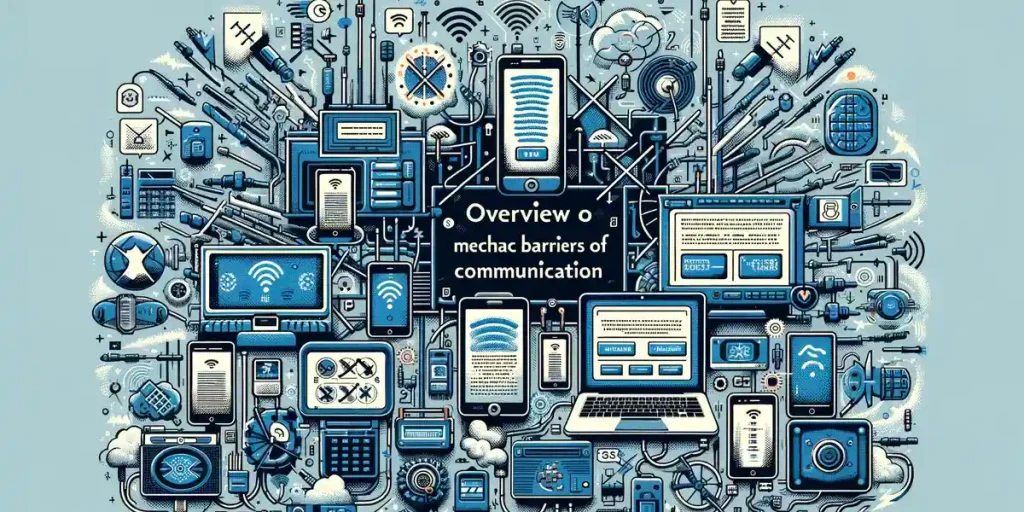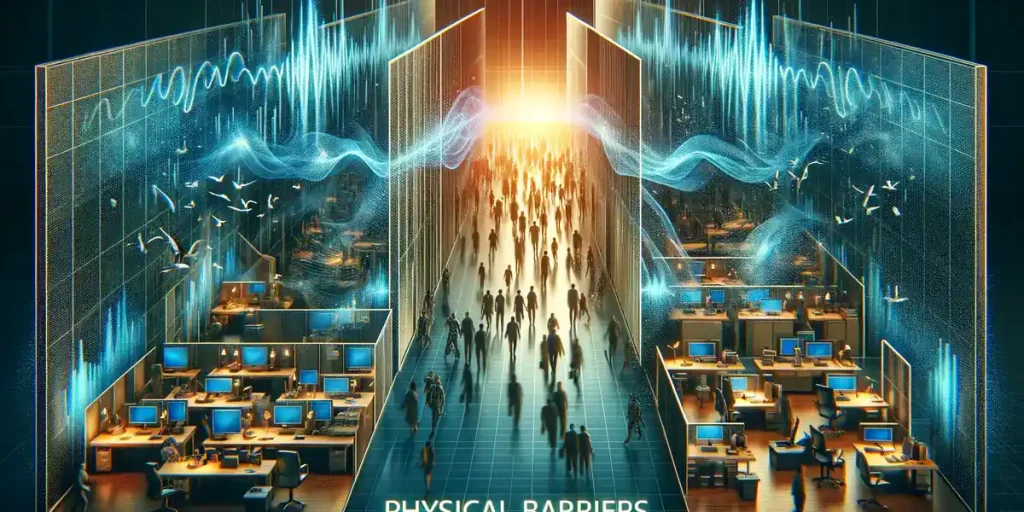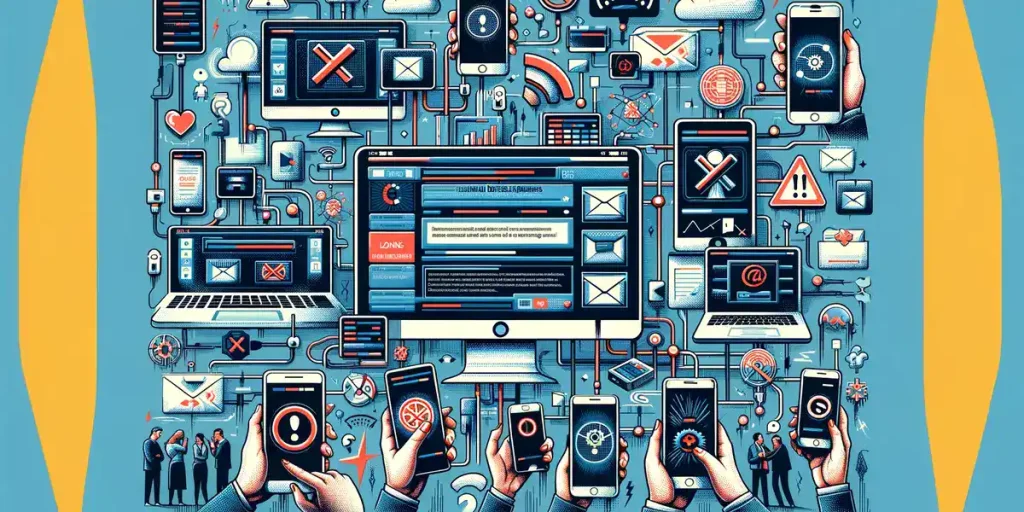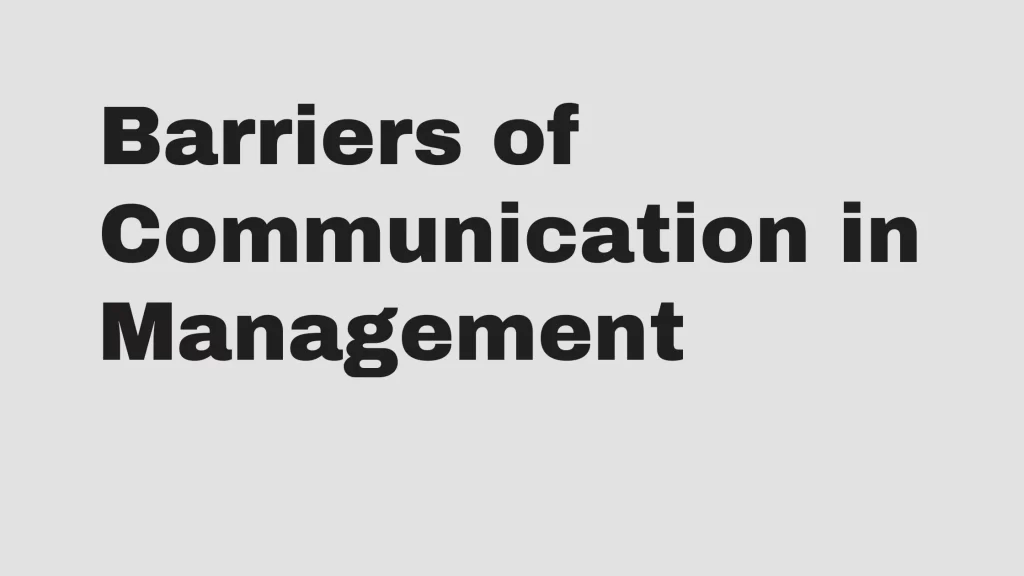In our tech-driven world, communication isn’t just about words anymore. It’s also about the devices and machinery we use to transmit those words. But what happens when our trusted tools turn against us? Welcome to the world of mechanical communication barriers.
Mechanical communication barriers are technical glitches that interrupt the smooth flow of information. They can stem from problems in the machinery or instruments we use to send and receive messages. Whether it’s a faulty pager in a restaurant or a noisy radio, these barriers can cause significant communication breakdowns.
Ever had a conversation disrupted by a poor phone signal or an email lost in cyberspace? Then you’ve experienced a mechanical communication barrier. They’re frustrating, they’re common, and they’re what we’ll be diving into in this article. So, let’s get started.
Contents
Overview of Mechanical Barriers of Communication
Interference stemming from mechanical barriers hinders effective communication. These barriers encompass a wide range of problems that disrupt the flow of information. Technological failures, equipment malfunctions, and poor network connectivity are all integral parts of these barriers.

These barriers manifest in many forms and can affect various transmitted communication methods. They may involve anything, from hardware limitations to power outages or inadequate system capacity.
For instance, consider utilizing telephones or fax machines for communication, where frequent transmission failures or a prolonged period without communication significantly inhibit the process, thus creating a mechanical communication barrier. Ergonomic issues can also cause frustration and discomfort, further hindering effective communication.
In various contexts, mechanical barriers can extend to physical aspects, such as environmental noise or the presence of physical obstructions. Poor layout arrangement in a workspace can create mechanical barriers to communication too. For example, the distance between offices or the absence of suitable meeting spaces can result in communication becoming more challenging.
To illustrate further, think about instances when insufficient media quality creates hurdles. The machinery or devices employed in communication are only effective when they function seamlessly. When noise from these devices causes interference, it forms a mechanical barrier that can lead to miscommunication.
Finally, let’s talk about how inadequate system capacity becomes a formidable mechanical barrier. When it comes to communication tools, their capabilities must match the required degree of use. Failure to meet these capacity needs leads to frequent disruptions, transforming these devices into a source of frustration rather than facilitating communication.
In essence, mechanical barriers are formidable challenges that can interfere with effective communication in many ways. It’s crucial to understand these challenges to develop strategies that minimize their impact and promote better communication. After all, efficient communication is the cornerstone of any successful endeavor.
Physical Barriers
Following the discourse on mechanical communication barriers, it is crucial to focus on physical barriers to comprehend the scope of obstacles hindering effective transmission of messages. Physical barriers are elements that may originate from our natural environment or be a product of human creation.
Encountered in the workplace and beyond, physical barriers may disrupt efficient, open dialogue among co-workers by interfering with the sender’s ability to deliver a message or cause the receiver to incorrectly interpret that message. Let’s delve into two common examples of physical barriers: noise and distance.

Noise
Often overlooked, noise can considerably deter message transmission and ranks among the most challenging physical obstructions in communication. The term ‘noise’ in communication does not only refer to auditory disturbances. It could come from a technological failure, equipment malfunction, or poor quality media. For instance, the hum of a malfunctioning computer or teleconference equipment during a meeting can distort messages or cause misinterpretation – creating a mechanical communication barrier.
The effect of environmental noise should not be underestimated either. Overloud conversations, raging machinery, or even the din of nearby construction work can distort communication.
Trying to convey a message in these conditions mostly ends in miscommunication as competing with these noises more often leads to misunderstandings than successful message conveyance.
This interference emerging from noise aligns with the concept of a leaky bucket – in the process of encoding, transmitting, and decoding messages, noise may hinder the communication process, making it less effective, similar to how water is lost from a leaky bucket.
The good news, it’s manageable! For instance, choosing quiet environments for essential discussions, being patient in repeating explanations, or maintaining healthy technological habits like regular hardware checkups can significantly help in reducing the impact of noise.
Distance
Another physical barrier, distance, has an undeniable impact on communication. It’s not just a problem of geography but also relates to the spatial arrangement within the same building or room. The great divide could be between employees working on different floors, buildings, or even remote workers engaging from home.
The key here is having the means to bridge this gap, considering hardware limitations, network connectivity and even power outages. In many forms of transmitted communication, the absence of non-verbal cues, for instance, body language, may lead to misinterpretation.
But as with most things in the digital age, technology is here to rescue. Tools like video conference software can be invaluable. With adequate system capacity, it aids in translating body language and facial expressions, bypassing physical distance. Furthermore, frequent virtual interaction can foster team spirit and provide a platform for any need for message clarification.
Technological Devices as Barriers
Transitioning straight from our previous discussion on physical barriers, let’s delve into another key area of communication hindrance: Technological devices. When we mention these, we’re often looking at the mechanical aspects that interfere with communication more than we’d like. Here, we’ll focus on two primary culprits that fit under this category: Email filters and issues with connectivity.

Email Filters
One of the commonly overlooked contributors to communication disruption is something most of us use every day: email filters. Unbeknownst to most, these filters, although aimed at keeping our inboxes tidy, can sometimes be the reason important emails land straight into the ‘junk’ or ‘spam’ folders, going unnoticed for days, weeks, or even longer.
Keep in mind that these email filters operate using sophisticated algorithms that categorize emails based on specific criteria. This means that sometimes, an important message may not reach its intended recipient due to the misinterpretation of its content. It’s not unheard of for a crucial detail to be lost or get delayed due to complications stemming from email filtration systems, portraying a glaring example of how a technological feature intended to aid, turns into a mechanical barrier to effective communication.
Connectivity Issues
Moving on to another aspect of technological interference in communication: connectivity issues. In our modern world, we rely heavily on the internet and network connections to communicate. It’s almost second nature for us to dial a contact, send an email, or even hop onto a video conference without a second thought about the underlying technology that allows us to do so.
Yet, poor network connectivity and power outages can sometimes cause serious disruptions. An inadequate system capacity or a simple hardware malfunction can lead to a total communication breakdown. In fact, it wouldn’t be unusual for there to be an influx of miscommunication, or even a longer period without communication, in areas with connectivity problems, effectively establishing these issues as formidable mechanical barriers in communication.
The role of technological devices in communication can’t be understated, but so too must we be aware of the potential barriers they can create. They’re only useful tools in the absence of any mechanical barriers to transmit information.
From email filters to connectivity issues, our dependence on technology subjects us to a myriad of challenges that underscore the importance of minimizing these mechanical barriers for more effective communication.
Mechanical Barriers Examples
Here are some examples across different categories:
Contraception
- Condoms: Latex or polyurethane sheaths used during sexual intercourse to prevent sperm from entering the uterus.
- Diaphragms: Flexible domes inserted into the vagina to cover the cervix and block sperm.
- Cervical Caps: Similar to diaphragms, but smaller and designed to fit snugly over the cervix.
Security and Safety
- Fences and Walls: Erected to secure property or certain areas from unauthorized access or to provide safety by preventing falls.
- Locks and Safes: Mechanical devices to secure belongings or restrict access to authorized individuals only.
- Barriers and Bollards: Installed in public places to control traffic, prevent vehicle-ramming attacks, or protect pedestrians.
Environmental Protection
- Oil Booms: Floating barriers used to contain oil spills on water surfaces to prevent environmental contamination.
- Erosion Controls: Such as silt fences or gabions, used to prevent soil erosion by water or wind.
- Windbreaks: Rows of trees or structures designed to reduce wind speed to protect soil from erosion or to shelter sensitive agricultural areas.
Health and Safety
- Face Masks and Respirators: Worn over the mouth and nose to protect against the inhalation of harmful substances or pathogens.
- Earplugs and Earmuffs: Used to protect ears from excessive noise, preventing hearing loss.
- Safety Glasses and Goggles: Protect the eyes from flying debris, chemicals, or harmful radiation.
Others
- Air Curtains: Devices that blow a controlled stream of air across an opening to reduce the transfer of heat, cold, or contaminants from one area to another.
- Silt Curtains: Used in water bodies to contain sediment disturbed by construction or dredging activities, preventing it from spreading.
These examples illustrate the wide application of mechanical barriers in providing protection and safety in various aspects of daily life and environmental management.
Conclusion
It’s clear that mechanical barriers, like email filters and connectivity issues, can significantly hinder effective communication. Email filters, while useful, can accidentally classify crucial messages as spam, causing them to go unnoticed. Connectivity problems, on the other hand, can disrupt conversations and lead to misunderstandings.
These barriers, along with physical ones such as noise and distance, present real challenges. The key to overcoming these obstacles lies in understanding them and finding innovative solutions. By doing so, we can ensure smoother, more reliable communication, regardless of the medium we choose to use.
Boko Ducky has over 10 years of experience in helping individuals and organizations improve their communication skills.



